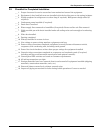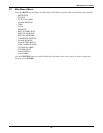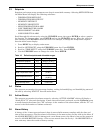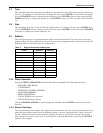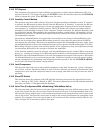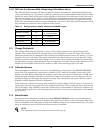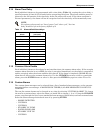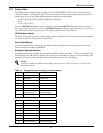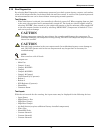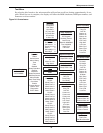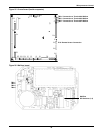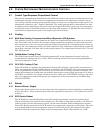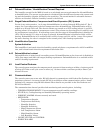
Microprocessor Control
40
3.14 Alarm Time Delay
Each individual alarm can be programmed with a time delay (Table 13), causing the unit to delay a
specified amount of time (0-255 seconds) before recognizing the alarm. The alarm condition must be
present for the full amount of the time delay before the alarm will sound. If the alarm condition is
diverted prematurely, the alarm will not be recognized and the time delay will automatically reset.
3.15 Common Alarm Enable
Each individual alarm can be selected to activate/deactivate the common alarm relay. If the energize
common alarm function is set to YES, the relay is energized immediately as the alarm is enunciated,
and de-energized when the alarm condition has cleared. If the alarm is completely DISABLED, the
alarm has no effect on the common alarm relay. Use the UP/DOWN arrows to scroll to a particular
alarm, press the ENTER button to select it, then press the ENTER key again to select Yes or No.
3.16 Custom Alarms
The custom alarm messages can be selected from a list of standard alarm messages, or the operator
can write his/her own message. A MAXIMUM OF THREE (3) ALARM MESSAGES CAN BE CUS-
TOMIZED.
The text for custom alarms can be changed at any time by selecting “CUSTOM ALARMS”. To change
the text for a custom alarm, select the alarm you would like to change, 1, 2 or 3. Using the UP/DOWN
arrows, step through the list of seven standard alarm messages (listed below) and two custom alarms.
Select the alarm message desired and store it by pressing ENTER.
• SMOKE DETECTED
•CUSTOM 2
•CUSTOM 3
• STANDBY GC PUMP
• WATER FLOW LOSS
• STANDBY UNIT ON
•CUSTOM 1
NOTE
For software alarms such as “loss of power” and “short cycle,” the time
delay should be left at the factory default of 0.
Table 13 Alarm default time delays
Alarm
Default Time Delay
(seconds)
Hum Prob 2
Chng Fltr 2
Custom Alarm #1 0
Custom Alarm #2 0
Custom Alarm #3 0
High Temperature 30
Low Temperature 30
High Humidity 30
Low Humidity 30
Short Cycle 1 & 2 0
Loss of Power 0




